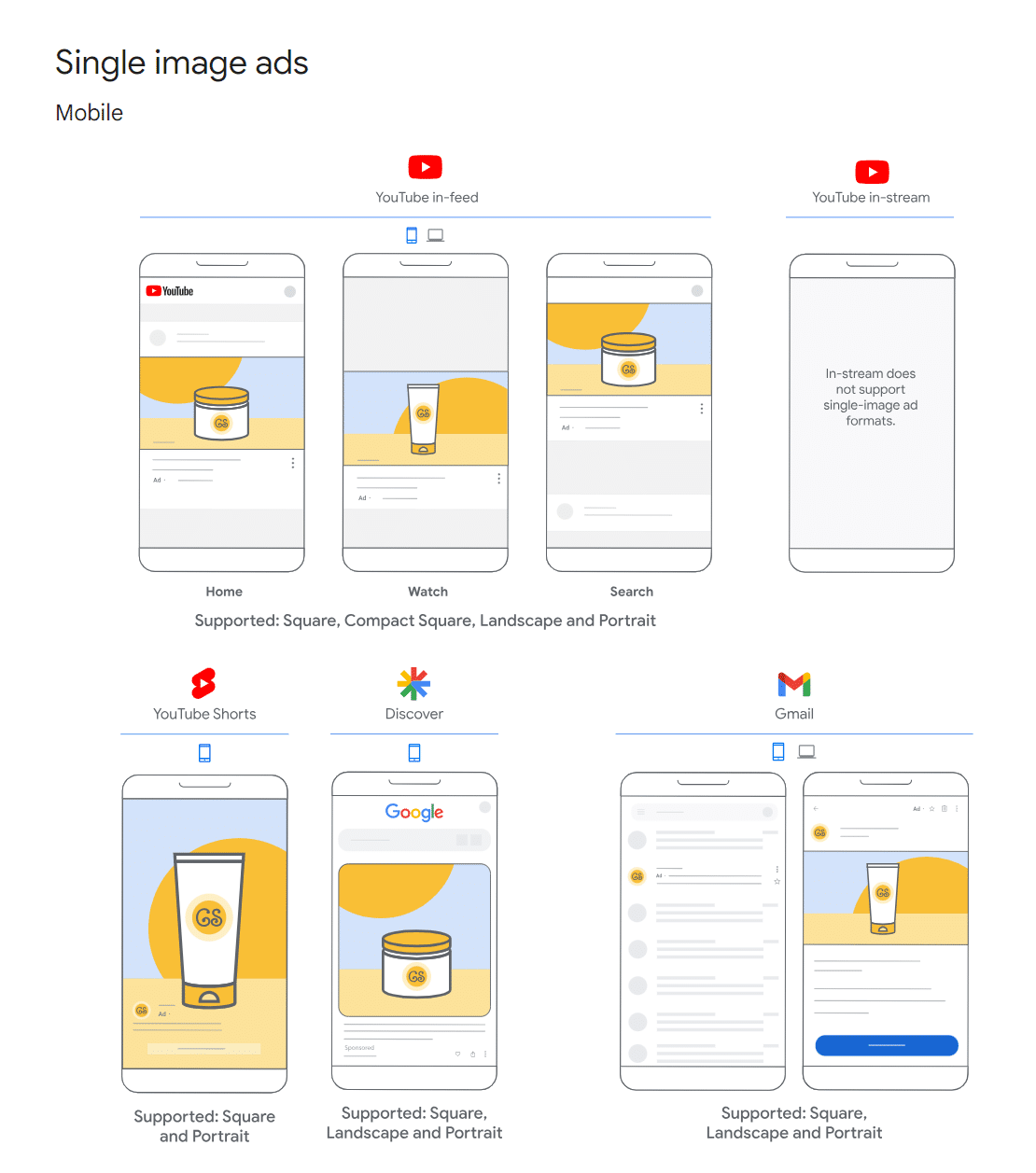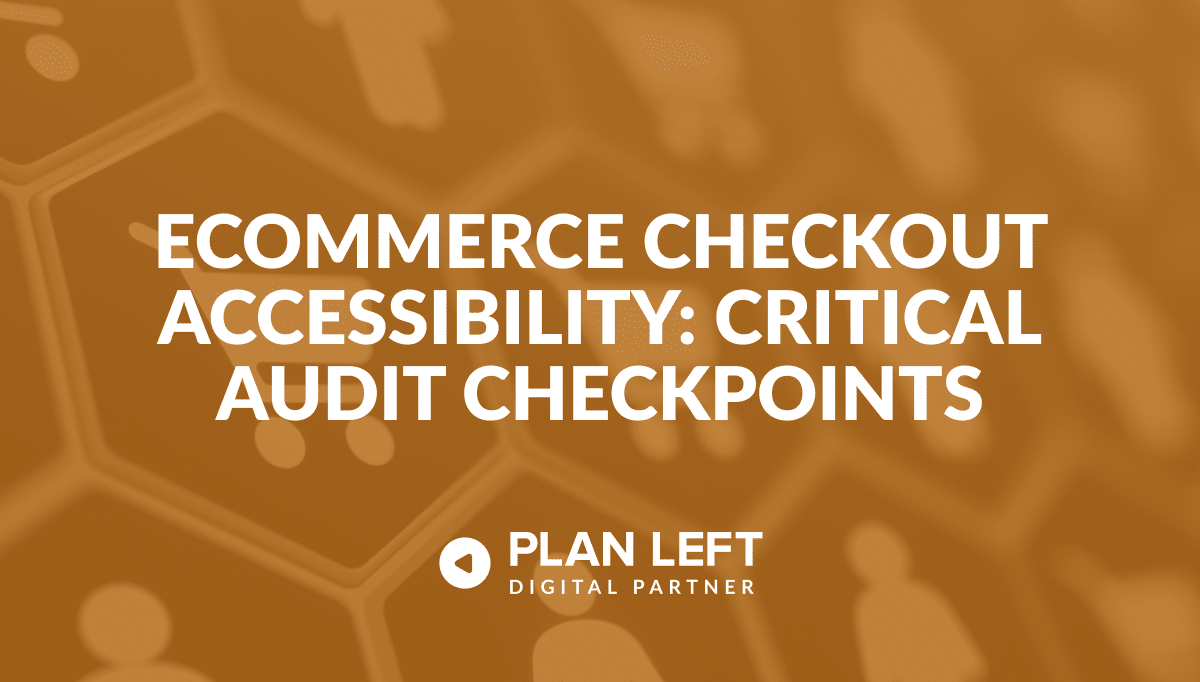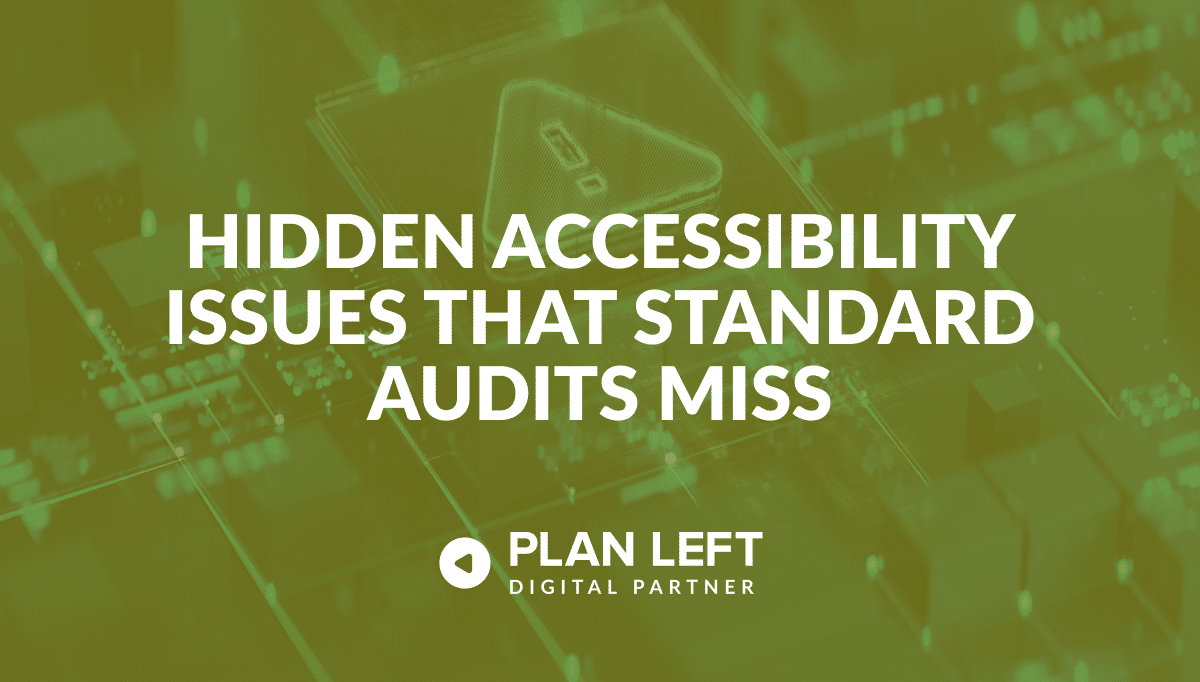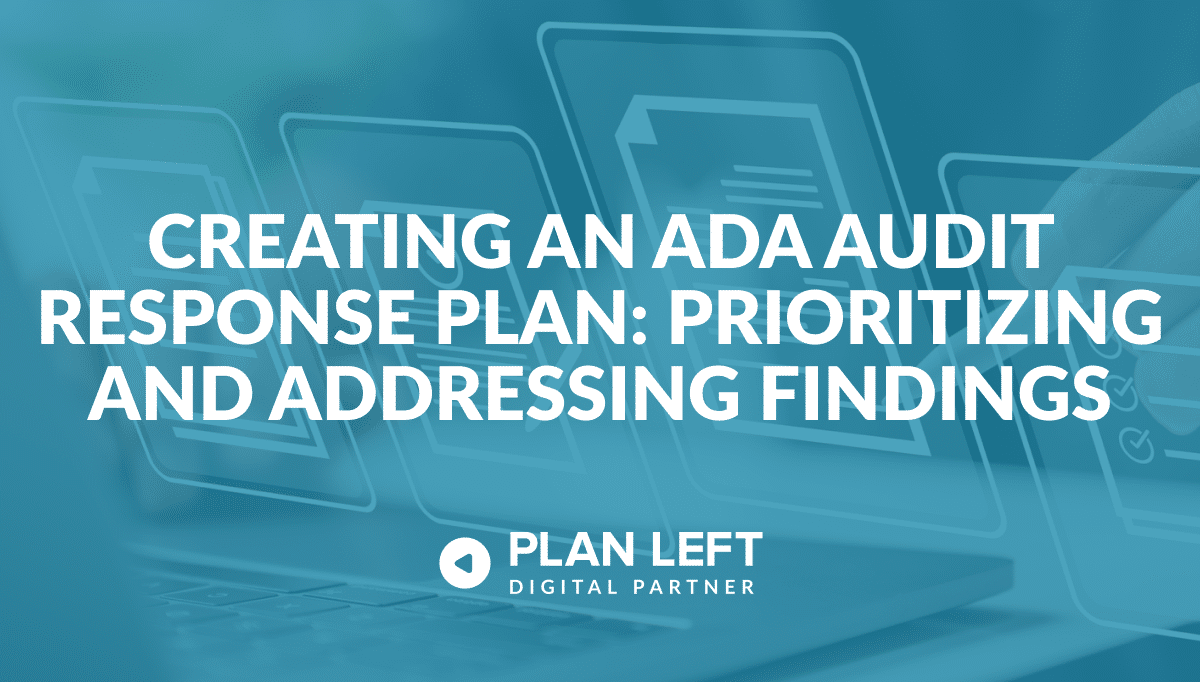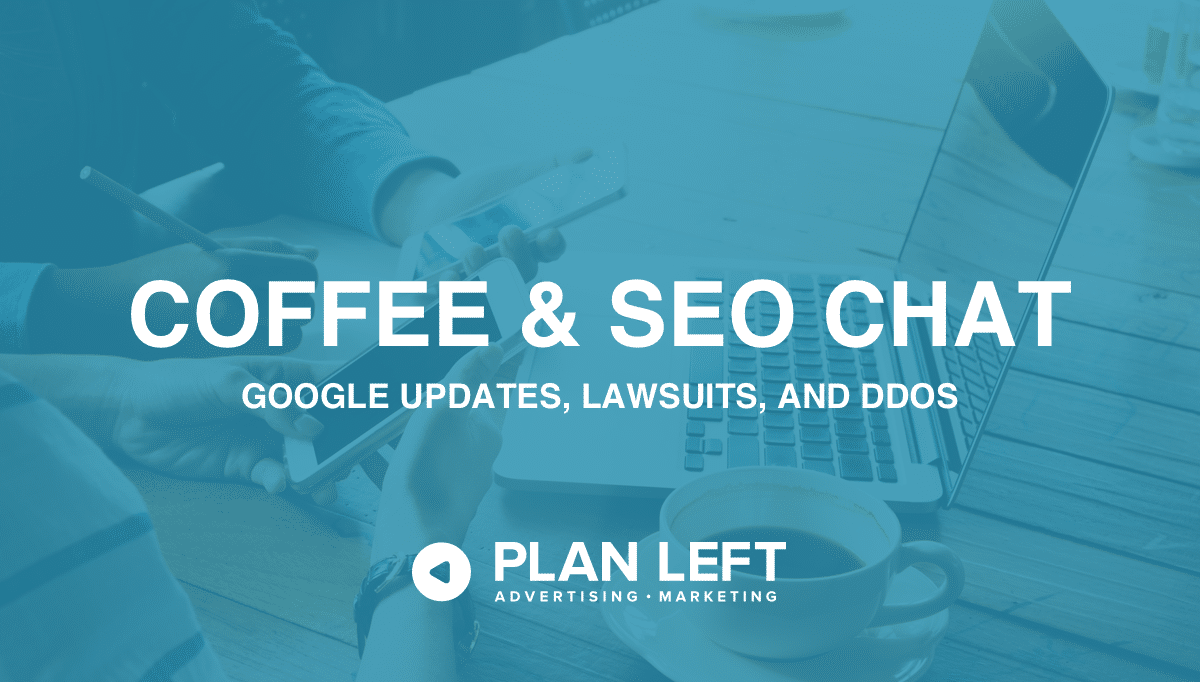
Grab your coffee or whatever quenches your thirst, and let’s chat. This week’s Coffee & SEO Chat unveils a series of twists with another core update, legal tangles, a digital onslaught, and an intense ad power play.
Google Updates Keep Coming With the Spam Update in October
With the SEO community still reeling from the Helpful Content Update in September, Google released another update with the October 2023 Spam Update. The Spam update is specifically targeting various types of content, including:
- Cloaking
- Hacked content
- Auto-generated content
- Scraped content
Combining automated systems and human review to detect and demote pages and sites, Google is leveraging SpamBrain, an AI and machine learning system capable of identifying new spam tactics.
Google’s spam policies clearly define what it deems unacceptable with primary elements including:
- Hidden texts or links are invisible to users but detectable by search engines.
- Auto-generated content offers minimal or no value to users.
- Large-scale article scraping without proper authorization.
- Pages are inundated with obtrusive ads, leading to a subpar user experience.
- Affiliate pages with scant content predominantly focused on monetization.
Similar to the Helpful Content Update, the Spam Update puts the emphasis on delivering the user a genuine, transparent, and honest experience.
Google is Back in Court
Google holds a new title as the recipient of one of the most significant antitrust lawsuits by the Department of Justice (DOJ) in more than 25 years. Despite numerous digital advertising providers, Google remains dominant, capturing approximately 28% of digital ad spend. If the DOJ wins, the digital advertising landscape will significantly transform.
Key points from the DOJ lawsuit:
- Acquiring Competitors: Google has acquired competitors to control key digital advertising tools website publishers use.
- Forcing Adoption of Google’s Tools: Google has been locking in website publishers to its tools, restricting its unique advertiser demand to its ad exchange.
- Distorting Auction Competition: Google has limited real-time bidding to its ad exchange, impeding the ability of rival ad exchanges to compete on equal terms.
- Auction Manipulation: Google has been manipulating auction mechanics across several products to insulate itself from competition and halt the rise of rival technologies.
This isn’t the first time Google has been on the receiving end of an antitrust lawsuit either. Since 2020, Google has found itself in not one, not two, but three antitrust lawsuits. With recent revelations showing Google frequently changing auctions used to sell search ads, increasing ad prices by up to 5%, this could support the DOJ’s claim of Google’s unlawful monopoly.
For advertisers, the lawsuit could lead to channel access and management changes, the uncoupling of blended campaigns, and disruption in data-driven attribution.
Ultimately, there are two possible outcomes:
- Google Wins: If Google emerges the victor, its business operations should remain unchanged. However, the DOJ might file other lawsuits in the future.
- Google Loses: The potential impacts on Google’s business are vast. They range from breaking up the entire Google ad stack business to applying fees and regulations. The DOJ could also segment DV360 and the Display network, extract YouTube from Google, or gut Google’s tech stack.
DDOS Attack Prompts Protective Patch Releases
There’s a new DDOS (Distributed Denial of Service) attack identified, and server software companies are on high alert. This attack requires minimal resources to launch, but the attack can result in unprecedented scale, posing a significant threat to websites.
The vulnerability exploits the HTTP/2 and HTTP/3 network protocols, facilitating multiple data streams between a server and a browser. This allows browsers to request multiple resources from a server simultaneously. The exploit, publicly announced by Cloudflare, Amazon Web Services (AWS), and Google, is termed HTTP/2 Rapid Reset. Most modern web servers employ the HTTP/2 network protocol. Given the absence of a software patch for the HTTP/2 security loophole, nearly every server is susceptible. Fortunately, server software companies are developing patches to rectify the HTTP/2 vulnerability.
Server software publishers are in the process of releasing patches to address the HTTP/2 exploit. Cloudflare has already safeguarded its customers. In extreme cases, if a server is under attack and vulnerable, server administrators can revert the HTTP network protocol to HTTP/1.1. While this may slow down server performance, it is preferable to a complete outage.
Relevant security bulletins:
- Cloudflare Blog Post: HTTP/2 Zero-Day Vulnerability Results in Record-Breaking DDoS Attacks
- Google Cloud Security Alert: Google mitigated the largest DDoS attack to date, peaking above 398 million rps
- AWS Security Alert: CVE-2023-44487 – HTTP/2 Rapid Reset Attack
New Tug-Of-War With Video & Image Ads
In a bold tug-of-war against social media platforms, Google has rolled out its innovative advertising product, Demand Gen Campaigns. By harnessing the power of AI, this product crafts precision-targeted video and image ads on YouTube and other Google platforms. The overarching ambition? To steer advertisers toward expanding their digital footprint beyond the confines of mainstream platforms like Facebook and Instagram.
This move by Google is a direct challenge to the established norms of social media advertising. Demand Gen Campaigns, with their crisp video ads of up to 15 seconds, are tailor-made for YouTube’s pre- and mid-roll placements. Complementing these are the mobile-optimized image carousels.
But what truly sets Demand Gen apart is its arsenal of creative tools. Advertisers can now fine-tune their content and messaging for varied audience segments. Google’s formidable AI comes into play here, identifying “lookalike” audiences that mirror a brand’s existing customer base. The result? Advertisers gain unprecedented control over ad delivery, targeting specific outcomes like clicks, website traffic, or conversions.
The launch of Demand Gen aligns with a seismic shift in how consumers consume content. Data suggests a balanced split in users’ time between giants like Facebook and Instagram and video-centric platforms like YouTube. A whopping 90% of users have engaged with content from specific creators across diverse platforms in the past year. This migration, often attributed to “social media fatigue,” sees users flocking to platforms like Reddit and YouTube in search of genuine, unfiltered interactions.
Google’s Demand Gen is more than just a product; it’s a response to this evolving user behavior. Early birds, such as Argentine fintech startup Naranja X, have already reaped its benefits, reporting a tripling of click-through rates at nearly two-thirds of the cost compared to traditional social campaigns. Samsung Germany’s experience? A staggering 400% jump in click-through rates.
The global rollout of Demand Gen Campaigns on October 10th, 2023, marked the sunset for Google’s erstwhile Discovery ads product, set to be phased out by early 2024. This audacious step by Google is a gauntlet thrown at competitors’ feet, especially the behemoth Meta. As Demand Gen gains traction, the ball is in Meta’s court to innovate and keep pace in this high-stakes advertising duel.
If you’re intrigued by the potential of Google’s Demand Gen but unsure of where to begin, don’t fret. Dive into this comprehensive External Demand Generation Implementation Guide provided by Google. It offers a step-by-step roadmap to harnessing the power of AI-driven video ads, ensuring you’re well equipped to navigate the tug-of-war between Google and traditional social platforms.
Watercooler Highlights
Before you take that last sip of your coffee, let’s dive into some buzzworthy snippets from the world of SEO and Tech. These highlights have been making the rounds, sparking conversations, and keeping digital enthusiasts on their toes. So, refill that cup if you must, and let’s get into the latest watercooler highlights:
Meta Introduces New Features for Facebook and Instagram Reels Ads
Meta is rolling out new features for Facebook and Instagram Reels ads to improve the user experience and give advertisers more tools to reach their target audience effectively. The updates include new ad formats, targeting options, and measurement tools.
AdMob Policy Update – Indirect Monetary Rewards Now Allowed
Google AdMob has updated its policies to allow indirect monetary items as rewards in ads. Starting from October 31, 2023, rewards such as discounts, loyalty points, free shipping, and free trials can be offered. This change gives advertisers more flexibility in selecting rewards for their ad units, potentially enhancing the appeal of ad campaigns to a broader audience.
RIAA Raises Concerns Over AI Voice Cloning
The Recording Industry Association of America (RIAA) is expressing concerns over AI voice cloning, considering it a potential copyright infringement threat. The RIAA has requested the US government to include AI voice cloning in its annual piracy watchdog list.
The organization specifically mentioned Voicify.AI, which offers voice models of famous artists, for potentially infringing copyrights and artists’ rights to publicity. The rise of AI voice cloning has led to debates about its copyright status, especially with songs using AI versions of artists’ voices gaining popularity.
Staying informed and up to date on current events is more crucial than ever. At Plan Left, we’re not just about strategies. We’re here for the conversations, too. Let’s sit down, chat, and navigate every twist and turn of our digital journey together. When you’re ready to map out the next steps, connect with us, and let’s set the course to drive your success.
Explore Latest Posts
Every abandoned cart tells a story. For users with disabilities, that story is often one of frustration, exclusion, and missed ... read more
June 30, 2025
Your website passes every automated accessibility check, meets WCAG compliance standards, and earned a perfect score on your latest audit. ... read more
June 25, 2025
Getting your ADA audit results back can feel overwhelming. Pages of technical findings, compliance gaps, and accessibility barriers might seem ... read more
June 23, 2025
MARKETING insights
Join the Thousands Who Receive Our Twice-Monthly Newsletter.
It's hard to keep up. Our newsletter is packed with buyer behavior insights, the latest marketing and technology updates, work/life balance tips, and—because we ❤️ our support staff—adorable pets looking for forever homes. Only twice per month. No clogged inboxes. You can't say no.


